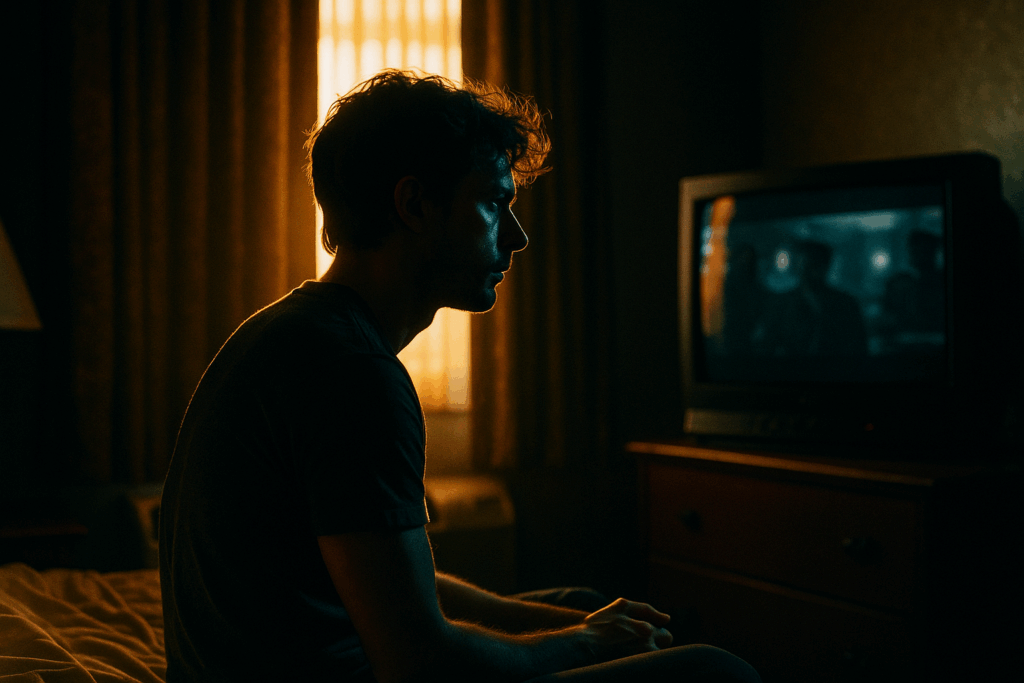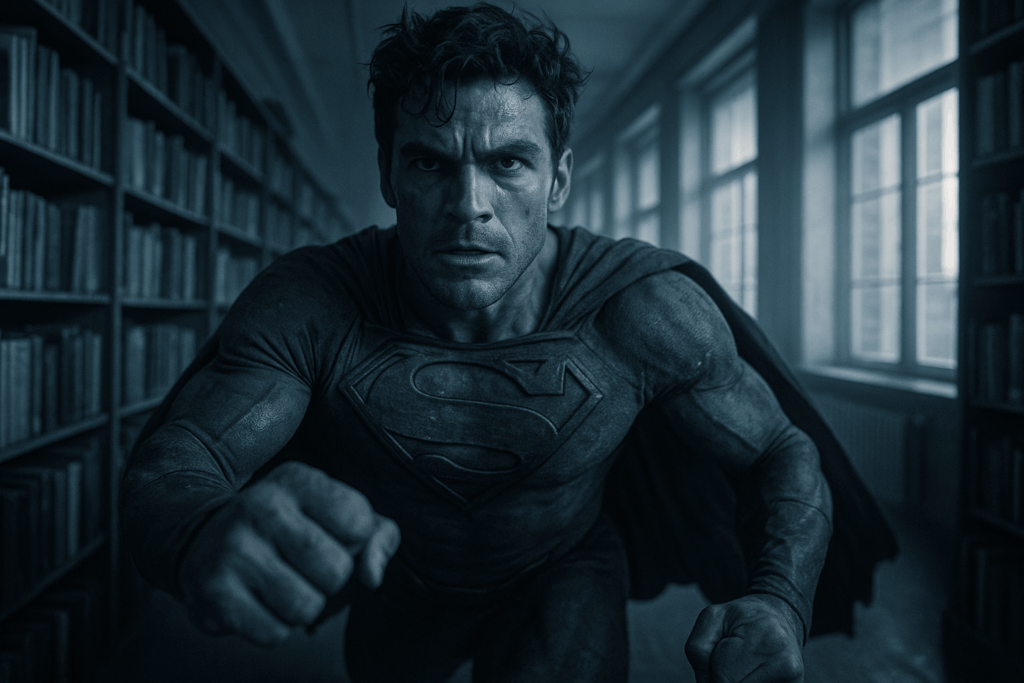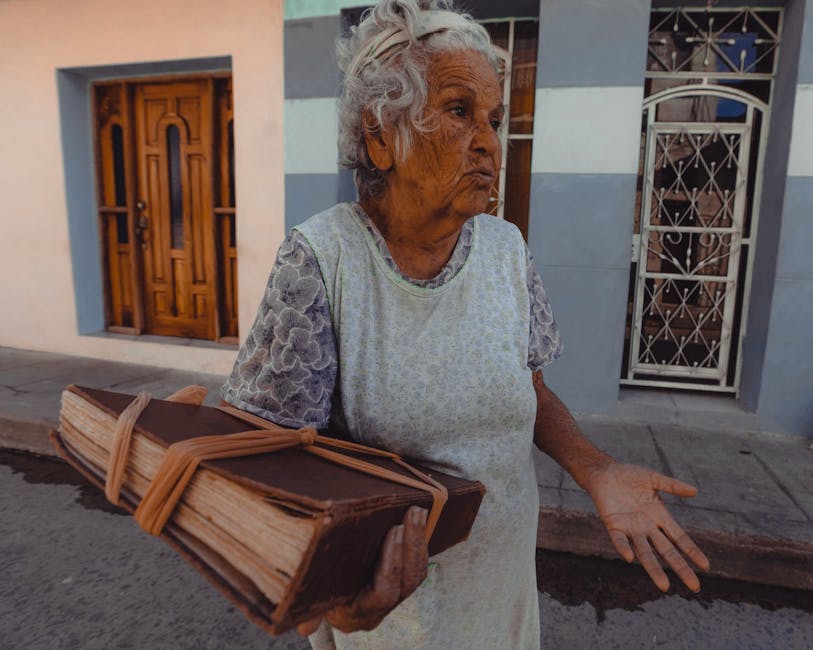Why TV Still Dominates the Cultural Pulse
Serialized storytelling has always had staying power, but today it runs deeper. We’re not just watching shows—we’re living in them. The build-up, the rhythm of returning episodes, the slow burn of a story allowed to unfold over ten, twenty, even fifty hours—this is what makes television uniquely engaging. It’s not about exposition dumps or fast climaxes. It’s about trust: a creator asking, “Stick with me,” and an audience replying with hours of their time.
Streaming changed the rules. Weekly drops gave way to entire seasons at once, and suddenly viewers redefined commitment. It’s no longer crazy to spend a weekend consumed by a single storyline. That binge model rewired storytelling. Arcs became tighter, characters more nuanced, because shows had to hold your attention without relying on the forced break of commercials or weeklong suspense.
What used to be a screenwriter’s domain has become a filmmaker’s playground. TV is now the canvas for directors and writers who think in arcs, not acts. The long-form format has pulled in talent from indie film, literature, and theater—and audiences are better for it. Nuanced storytelling isn’t a gamble anymore; it’s the expectation. Where films give us glimpses, today’s series dive deep, often outpacing even the best of cinema when it comes to emotional depth and visual craft.
Must-Watch #1: “The Last of Us”
Adapting a beloved game like “The Last of Us” was a balancing act—honor the source without getting trapped by it. The show staggered that line with discipline and just enough nerve. Key story arcs from the game stayed intact, but the adaptation leaned into human moments the controller never had time for. Side characters were given space to breathe, entire backstories expanded, and silence played a bigger role than cutscenes ever could.
Performance did the heavy lifting. Pedro Pascal and Bella Ramsey held the center with raw, grounded work. But it wasn’t just them—set design, cinematography, and score pulled together to create a world that felt broken but lived-in. Think cracked pavement, flickering lights, aching pauses. It wasn’t loud; it was loaded.
This wasn’t just a zombified road trip. It was a post-apocalyptic drama that didn’t flinch. The emotional beats hit harder because they weren’t sensationalized. They were earned. HBO took the material seriously and didn’t polish the grime off. That raised the bar, not just for adaptations, but for how the genre should feel—less spectacle, more soul.
Must-Watch #2: “Succession”
“Succession” doesn’t need explosions or car chases. Its bullets are words, and boardrooms are its war zones. What makes the show hit so hard is its ability to turn backroom deals and family bickering into moments of gut-punch tension. Think Shakespeare, but with private jets and press releases.
The writing is surgical. Dialogue doesn’t meander—it cuts. Every insult is laced with subtext, every silence stretched tightly with stakes. Direction plays into this too, with handheld cameras catching glances, flinches, power moves. Dysfunction isn’t just a layer—it’s the core of the Roy family’s empire, and what keeps audiences hooked.
But it’s more than just a rich-people soap opera. “Succession” redefined what prestige drama could be: messy, modern, and morally bankrupt, yet still deeply human. No neat heroes, no tidy arcs—just raw ambition and emotional wreckage, dressed in monograms.
It didn’t just earn its place in the canon. It scratched its name in like a threat.
Must-Watch #3: “The Bear”
Where Fire Meets Emotion: The Kitchen as a Character
Set against the gritty backdrop of Chicago, The Bear plunges viewers into the high-octane world of a struggling sandwich shop. But this isn’t just a show about cooking—it’s a portrait of chaos, grief, and the relentless pursuit of purpose. The kitchen itself becomes a living entity, reflecting the internal turmoil of its characters.
- Industrial clangs and tight spaces mirror emotional tension
- Rapid movement and overlapping dialogue heighten urgency
- Chicago’s presence is more than setting—it’s part of the story
Themes That Bite: Grief, Work Culture & Found Family
At its emotional core, The Bear dissects the realities of grief and legacy through Carmy’s return to run his late brother’s restaurant. It’s not just about managing a kitchen, but navigating trauma, disillusionment, and the complicated ties that hold people together.
- Grief is handled with restraint and realism
- Toxic and redemptive elements of hustle culture are exposed
- Team dynamics evolve into a true sense of found family
Breaking From the Recipe: A Fresh Visual & Narrative Style
Forget the formula. The Bear trades traditional arcs for raw immediacy. Episodes often feel like barely-contained outbursts, yet the careful direction ensures each beat lands with precision.
- Tightly scripted episodes with brisk pacing
- Single-take scenes increase immersion and anxiety
- Cinematography and sound design add emotional texture
Whether you’re in it for the culinary chaos or the human drama crawling underneath it, The Bear delivers one of the most viscerally charged and emotionally grounded viewing experiences of the year.
Must-Watch #4: “Severance”
“Severance” is one of the most distinctive and conceptually rich series in recent television history. It pushes corporate satire to thoughtful, disturbing extremes while balancing a meticulously paced thriller. This is not just a show—it’s an experience designed for both bingeing and analysis.
A Corporate World Reimagined
At its core, “Severance” uses workplace culture to reflect psychological and societal fractures. The series imagines a haunting world in which employees can separate their work and home selves through a surgical procedure—creating two versions of each person, neither aware of the other.
- A biting critique of modern work-life balance
- Layers of ethical ambiguity built into a sci-fi premise
- Parallels to real-world corporate detachment and burnout
Visual Design as Storytelling
The show’s production design isn’t just a backdrop—it’s a language of its own. The sterile hallways, outdated computers, and colorless break rooms all serve both thematic and emotional purpose.
- Set design reflects the cold alienation of severed life
- Costume choices echo identity control and conformity
- Camera angles and lighting double as psychological cues
The Art of the Slow Burn
“Severance” excels with a patient narrative structure that rewards attention. Each episode peels back just enough to stir intrigue, while delivering emotionally charged reveals with surgical timing.
- Intricate mystery that unfolds with purpose
- Relies on quiet tension over overt action
- Strong ensemble cast, with standout performances grounding the surreal elements
Why It Matters For viewers who crave layered storytelling and a fresh visual style, “Severance” is more than a critique of corporate life—it’s an allegory for identity, control, and memory. It positions television as both high art and provocative conversation starter.
Recommendation: Watch when you’re ready to think deeply and discuss often.
What’s Behind the Buzz
What’s lifting today’s TV shows beyond the ordinary? It starts in the writers’ rooms. The best series are pulling in talent from film and theater—people who understand structure, dialogue, and emotional pacing. These rooms aren’t just staffed; they’re curated. The goal isn’t just plot but tone, subtext, rhythm. It shows.
Then there’s the showrunner. In 2024, this role isn’t middle management. It’s closer to a creative CEO—uniquely responsible for vision, execution, and team alignment. The really compelling content often comes from showrunners who treat the gig less like a job and more like stewardship of an entire universe.
And let’s talk visuals. This isn’t paint-by-numbers TV anymore. Cinematographers are lighting scenes with film-level intentionality. Designers are building sets that live and breathe. Even the music feels scored for the big screen. The shows that stick now don’t just tell stories—they build atmospheres. You notice the difference, even if you can’t always put your finger on why.
The Forgotten Gems — Underrated but Impactful
Not every great show comes with a billboard or splashy rollout. Some slip quietly into the stream, gather dust for a bit, then get passed along between friends like a favorite bootleg vinyl. That’s where international series are hitting hard right now—not just with cult followings, but with world-class storytelling that deserves center stage.
Look to South Korea, which followed up its global smash hits with deeper, stranger entries like My Mister—a quietly searing character drama that trades spectacle for soul. Or 1899, the now-canceled sci-fi from the team behind Dark, which dared to weave language, genre, and identity into something dense and daring.
Spain’s Patria was another quiet powerhouse—set against the backdrop of Basque separatist violence, it strips conflict down to local rooms, strained friendships, and daily decisions. Australia’s Mr Inbetween somehow turned a hitman’s double life into something minimalist yet profound.
These aren’t just solid shows. They’re proof that precision craft still moves the needle—even if that momentum comes from whispers, not algorithms. They may have dodged the mainstream, but they landed every beat. Worth watching? Absolutely. Worth talking about? Even more so.
Final Word: Trends and Takeaways
Serialized television isn’t just entertainment—it’s memory. Unlike other formats, it builds over time, rewarding attention, patience, and emotional investment. This long-view approach mirrors how people experience life: not in sound bites, but in arcs. That’s why the most impactful shows of the moment lean into complexity. Characters are contradictory. Plots evolve slowly. Nothing is spoon-fed—and viewers appreciate that.
Audiences today are leaning into layered storytelling. They want to unpack meaning across seasons, not minutes. Shows that drop breadcrumbs—whether emotional or narrative—draw sharper loyalty. It’s less about passive consumption, more about co-discovery. They’re not just watching; they’re decoding, debating, rewatching.
And yet, the format battle rages on. Binge drops create buzz but disappear fast. Weekly releases stretch relevance, keep social media humming, and let conversations breathe. The choose-your-strategy part makes all the difference, especially for creators looking to build momentum, not just moments.
If you’re drawn to where storytelling has been—and where it’s heading—check out more critical perspectives at Classic Films Revisited: Insights and Analysis.




